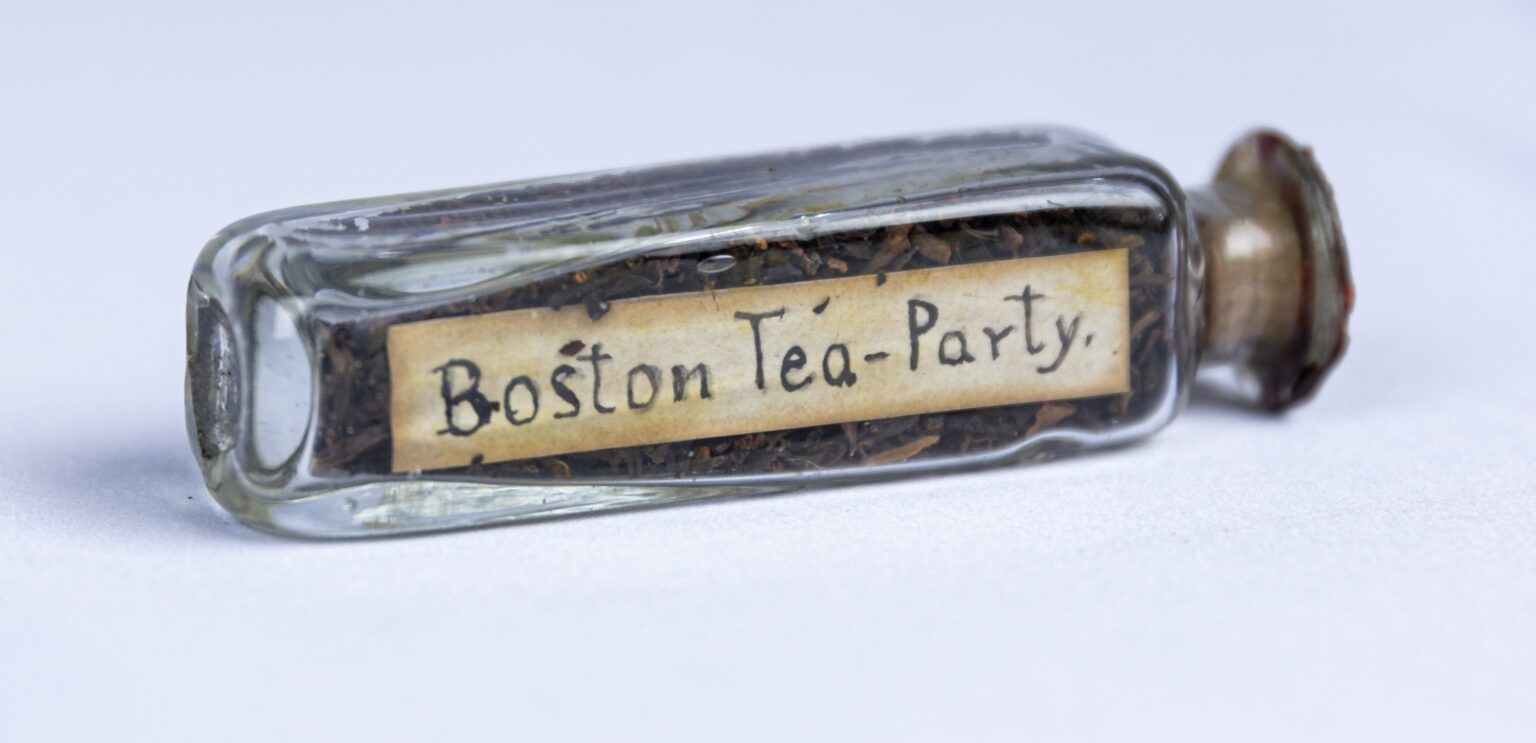Spilling the Tea on an Artifact
The American Independence Museum in Exeter, New Hampshire, will open for the season on Wednesday, 4 May.
Its first “Tavern Talk” of the year will be one week later, on 11 May. Alan R. Hoffman will speak on “Lafayette and Human Rights” at 6:30 P.M.
While visiting the museum website, I was intrigued by this webpage on a reported sample of “Boston Tea Party Tea,” part of a series called “30 Stories for 30 Years.” About the vial shown above, it says:
The two artifacts do look similar, which might have made them easy to confuse. Or was one created in imitation of the other?
Its first “Tavern Talk” of the year will be one week later, on 11 May. Alan R. Hoffman will speak on “Lafayette and Human Rights” at 6:30 P.M.
While visiting the museum website, I was intrigued by this webpage on a reported sample of “Boston Tea Party Tea,” part of a series called “30 Stories for 30 Years.” About the vial shown above, it says:
This tea is believed to have originated from Patriot Thomas Melvill (1751-1832), who participated in the Boston Tea Party. . . . It is believed that this vial contains the tea saved from Melvill’s shoe and was passed through the generations until it was eventually acquired by William Lithgow Willey [1857–1949] and donated to the Society of the Cincinnati.However, that’s followed by a “Contemporary Interpretation” that says:
A document found in the Society’s archives pertaining to Willey’s estate following his death states that the vial is “labeled in W.L.W’s printing,” suggesting that the vial may not be the same one labeled by Melvill’s wife. The label has been dated to the nineteenth century, creating further doubt. . . . To date, no documentation has been found to determine how and where Willey acquired this vial, and its origins remain a mystery.What’s more, the Old State House Museum in Boston holds a vial of tea from the Melvill family that was described as early as 1821, pictured in 1884, and donated to that collection in 1900, as I tracked here. That vial is featured on the Old State House’s website.
The two artifacts do look similar, which might have made them easy to confuse. Or was one created in imitation of the other?


No comments:
Post a Comment